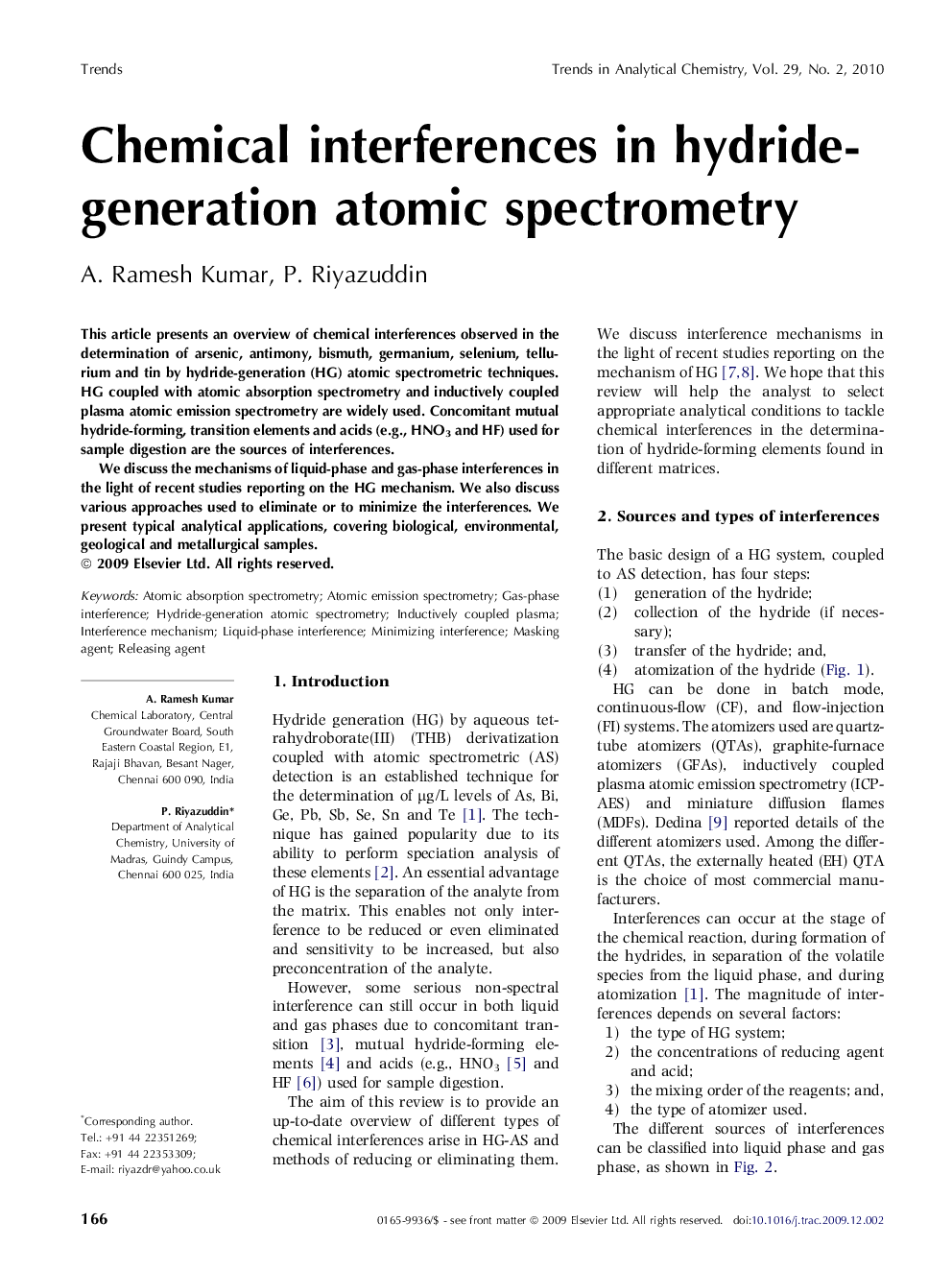| Article ID | Journal | Published Year | Pages | File Type |
|---|---|---|---|---|
| 1249363 | TrAC Trends in Analytical Chemistry | 2010 | 11 Pages |
This article presents an overview of chemical interferences observed in the determination of arsenic, antimony, bismuth, germanium, selenium, tellurium and tin by hydride-generation (HG) atomic spectrometric techniques. HG coupled with atomic absorption spectrometry and inductively coupled plasma atomic emission spectrometry are widely used. Concomitant mutual hydride-forming, transition elements and acids (e.g., HNO3 and HF) used for sample digestion are the sources of interferences.We discuss the mechanisms of liquid-phase and gas-phase interferences in the light of recent studies reporting on the HG mechanism. We also discuss various approaches used to eliminate or to minimize the interferences. We present typical analytical applications, covering biological, environmental, geological and metallurgical samples.
